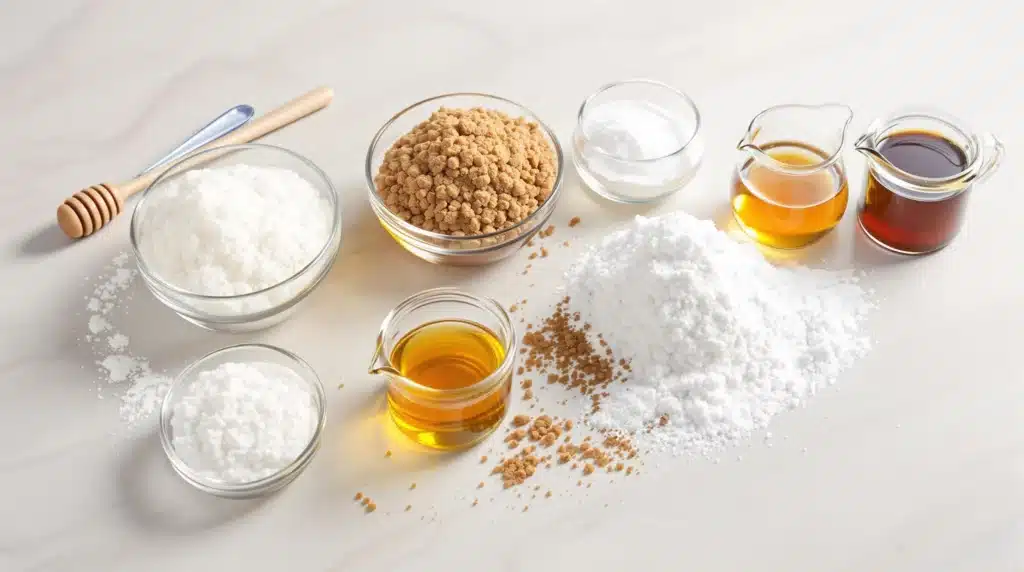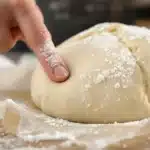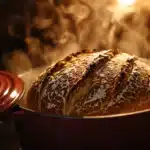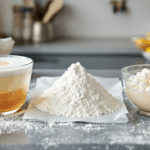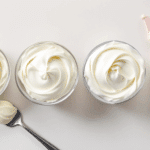Walk down any baking aisle, and you’re confronted with a dazzling array of sweeteners. There’s the familiar sparkle of granulated white sugar, the comforting aroma of brown sugar, the golden glint of honey, and perhaps even some less familiar syrups and powders. For many aspiring bakers, sugar is simply about adding sweetness. But “sugar smarts” go far beyond taste. Sugar is a multi-tasking marvel in the kitchen, playing critical roles in texture, moisture, color, and even leavening.
Thinking that all sugars are interchangeable or that their only job is sweetness is a common beginner pitfall. Choosing the right sweetener – whether it’s classic granulated, molasses-rich brown sugar, or flowing honey – can dramatically alter the outcome of your bake. Understanding the diverse functions of sugar and the unique properties of different sweeteners is essential for controlling your results and unlocking new levels of baking prowess. Let’s move beyond basic granulated sugar and explore the fascinating world of sweeteners, empowering you to make smarter, more delicious choices in your baking adventures.
Not Just Sweetness: The Many Roles of Sugar in Baking
While satisfying our sweet tooth is certainly a primary function, sugar wears many other hats in the baker’s kitchen. Its chemical and physical properties influence the final product in numerous ways:
- Moisture Retention: Sugar is hygroscopic, meaning it attracts and holds onto water molecules. This property is vital for keeping baked goods like cakes and cookies moist and extending their shelf life. The more sugar (especially certain types like brown sugar or honey), the moister the product tends to stay.
- Tenderness: Sugar tenderizes baked goods by interfering with gluten development and starch gelatinization. It competes with flour proteins (glutenin and gliadin) and starches for water. By “hogging” some of the available water, sugar limits gluten formation, resulting in a less tough, more tender crumb. It also raises the temperature at which starches set, contributing to a softer texture.
- Browning (Maillard Reaction & Caramelization): That beautiful golden-brown color on crusts and cookies? Thank sugar! Sugars contribute to browning through two main processes:
- Maillard Reaction: A complex reaction between sugars and amino acids (from proteins in flour, eggs, or milk) under heat, creating hundreds of different flavor and aroma compounds, along with brown pigments (melanoidins).
- Caramelization: When sugars themselves are heated to high temperatures (above approx. 320°F / 160°C, depending on the sugar), they break down and reform into new compounds with characteristic brown colors and nutty, slightly bitter caramel flavors.
- Leavening Aid: Sugar plays a role in leavening in a couple of ways:
- Food for Yeast: In yeast breads, sugar provides readily available food for the yeast, jumpstarting fermentation and CO2 production (though yeast can also break down starches).
- Aeration (Creaming Method): In recipes using the creaming method, sharp sugar crystals are beaten with solid fat (like butter). The edges of the crystals cut through the fat, incorporating tiny air bubbles. These trapped bubbles expand during baking, contributing significantly to the leavening and light texture of many cakes and cookies.
- Spread (Cookies): Sugar melts when heated. In cookie dough, this melting contributes to the dough spreading out on the baking sheet. The type and amount of sugar significantly influence how much a cookie spreads. Finer sugars and liquid sugars tend to promote more spread than coarser granulated sugars.
- Stabilization (Egg Foams): When whipping egg whites (for meringues, soufflés, or angel food cake), adding sugar plays a crucial stabilizing role. It helps prevent the water in the egg whites from draining out, makes the protein network stronger and less likely to collapse, and protects against over-whipping. Sugar should be added gradually once the whites reach soft peaks.
- Flavor Enhancement: Beyond simple sweetness, different sugars contribute their own distinct flavors – the caramel notes of brown sugar, the floral hints of honey, the robust taste of molasses, or the unique profile of maple syrup. Sugar can also balance other flavors, like acidity or bitterness.
Understanding these functions helps explain why simply reducing sugar or swapping types haphazardly in a recipe can lead to results that are not just less sweet, but also dry, tough, pale, flat, or improperly textured.
Know Your Crystals: Common Granulated & Crystalline Sugars
These are the familiar dry, crystalline sugars, mostly derived from sugarcane or sugar beets (chemically, they are primarily sucrose).
Granulated Sugar (White Sugar / Table Sugar)
The workhorse of the baking world.
- Characteristics: Highly refined sucrose crystals (99.9% pure sucrose). Its neutral flavor allows other ingredients to shine through. This is the standard against which other sugars are often compared.
- Sub-Types:
- Regular Granulated: Standard crystal size.
- Fine / Caster / Baker’s Sugar: Smaller crystals dissolve more quickly and evenly. Excellent for delicate cakes, meringues, custards, and creaming with butter for a finer texture. Can often be substituted 1:1 for regular granulated.
- Coarse / Sanding Sugar: Large crystals that don’t easily dissolve. Primarily used for decorating cookies, muffins, and pastries, adding sparkle and crunch.
- Best Uses: Truly all-purpose – cakes, cookies, muffins, pies, breads, meringues, custards. Provides clean sweetness and performs all the functional roles reliably.
Confectioners’ Sugar (Powdered Sugar / Icing Sugar)
Granulated sugar ground into a fine powder.
- Characteristics: Extremely fine particles of sucrose, resembling powder rather than crystals. Contains a small amount (usually 3-5%) of an anti-caking agent, typically cornstarch (or sometimes tapioca starch), to prevent clumping.
- Types: Often classified by fineness (e.g., 10X, 6X – higher numbers mean finer powder). 10X is common for home use.
- Best Uses: Primarily for applications where sugar needs to dissolve instantly without heat or where a smooth, non-granular texture is essential:
- Icings, Frostings, Glazes (dissolves smoothly)
- Dusting or Garnishing finished desserts
- Some candies
- Certain cookies like shortbread or melt-aways where a very tender, smooth texture is desired.
- Important Note: Due to the added cornstarch and fine texture, confectioners’ sugar cannot be substituted 1:1 by weight or volume for granulated sugar in most baking recipes (cakes, cookies relying on creaming). It behaves very differently, absorbing more liquid and lacking the crystal structure needed for creaming.
Brown Sugar (Light & Dark)
A staple for its flavor and moisture-adding properties.
- Characteristics: Essentially granulated white sugar that has had a specific amount of sugarcane molasses added back into it (or, less commonly, left in during a less stringent refining process). The molasses makes it moist, slightly acidic, and gives it its characteristic color and flavor. It should be packed firmly when measuring by volume.
- Light vs. Dark: The difference lies purely in the amount of molasses:
- Light Brown Sugar: Contains less molasses (around 3.5%). Milder caramel flavor, lighter color. A good all-purpose brown sugar.
- Dark Brown Sugar: Contains more molasses (around 6.5%). Stronger, more robust molasses flavor, darker color, slightly more moisture and acidity.
- Best Uses: Adds moisture, chewiness, and distinct caramel/molasses flavor notes. Excellent in:
- Cookies (especially chewy types like chocolate chip)
- Cakes (adds moisture and flavor, e.g., spice cake, apple cake)
- Quick Breads, Muffins
- Glazes, Sauces, Marinades
- Candies like caramels and pralines
- Functionality: The added moisture contributes to softer, chewier textures. The slight acidity can react with baking soda, providing some leavening. It promotes more spread in cookies compared to white sugar. Light and dark can often be used interchangeably, but expect a stronger flavor and darker color with dark brown sugar.
Raw Sugars (Turbinado, Demerara, Muscovado)
These sugars are less refined than standard white or brown sugar, retaining varying amounts of their natural molasses coating.
- Characteristics: Typically have larger crystals than granulated sugar and a golden to dark brown color. Their flavors range from subtly honey-like to intensely molasses-rich. They are often perceived as more “natural,” though nutritionally very similar to brown sugar.
- Turbinado / Demerara: Large, light golden-brown crystals with a delicate molasses flavor. Relatively dry compared to brown sugar. Often called “sugar in the raw.”
- Muscovado (Light & Dark): Very moist, fine-grained (almost sandy/sticky), with a much stronger, complex molasses flavor than regular brown sugar. Dark muscovado is particularly intense.
- Best Uses:
- Turbinado/Demerara: Excellent for sprinkling on top of muffins, scones, cookies, or crème brûlée before baking/torching to add a crunchy, slightly caramelized topping. Can be used in beverages.
- Muscovado: Adds deep, rich, slightly smoky molasses flavor and significant moisture. Fantastic in gingerbread, rich fruit cakes, sticky toffee pudding, brownies, BBQ sauces, and marinades where intense flavor is desired. Can sometimes substitute for regular brown sugar but expect a much stronger flavor impact. Due to its moisture, it might require slight recipe adjustments.
Liquid Gold: Exploring Liquid Sweeteners
Unlike their crystalline cousins, these sweeteners are liquid at room temperature. They contribute sweetness but also significantly impact the hydration, texture, and flavor of baked goods. When substituting them for granulated sugar, adjustments to the recipe’s other liquids are usually necessary.
Honey
Nature’s original sweetener.
- Characteristics: Produced by bees from flower nectar. Composition varies but is primarily fructose and glucose, with water, trace enzymes, minerals, and flavor compounds. Flavor profile depends heavily on the floral source (e.g., mild clover, orange blossom; darker, stronger buckwheat). Highly hygroscopic (attracts moisture even more than sugar). Slightly acidic.
- Best Uses: Adds distinct floral flavor and significant moisture. Promotes faster browning due to fructose content. Good in some cakes (honey cake), cookies, muffins, glazes, dressings, and marinades.
- Substitution: Can replace some granulated sugar (up to half is often recommended), but reduce the recipe’s liquid by about 1/4 cup for every cup of honey used. Its strong flavor will be noticeable, so choose honey variety carefully. May need to slightly reduce oven temperature to prevent over-browning. Its acidity can react with baking soda.
Maple Syrup
The iconic flavor of boiled maple sap.
- Characteristics: Primarily sucrose dissolved in water, with trace minerals and unique flavor compounds developed during boiling. Flavor intensity and color vary by grade (e.g., Golden/Delicate Taste, Amber/Rich Taste, Dark/Robust Taste, Very Dark/Strong Taste – older grading systems used A, B, C). Pure maple syrup is distinct from maple-flavored pancake syrups (which are usually corn syrup based).
- Best Uses: Beyond pancakes and waffles, excellent in glazes, custards, pies (pecan, pumpkin), cakes, cookies, scones, and candies where its distinctive flavor is desired. Adds moisture.
- Substitution: Similar to honey, reduce recipe liquid by about 3-4 tablespoons for every cup of maple syrup used. Expect a distinct maple flavor.
Molasses (Light/Dark/Blackstrap)
The flavorful byproduct of sugar refining.
- Characteristics: Thick, viscous, dark syrup remaining after sucrose crystals are removed from sugarcane or beet juice. Contains sucrose, fructose, glucose, plus minerals (iron, calcium, magnesium). Flavor becomes stronger, less sweet, and more mineral-tasting progressing from light (mildest) to dark (robust) to blackstrap (strongest, slightly bitter). Unsulphured molasses is generally preferred for better flavor. Acidic.
- Best Uses:
- Light/Dark Molasses: Essential for gingerbread, molasses cookies, baked beans, rye bread, brown bread, mincemeat pie. Key ingredient in making brown sugar. Adds strong, characteristic flavor and dark color.
- Blackstrap Molasses: Very intense, somewhat bitter flavor. Used more often as a dietary supplement or in animal feed. Generally too strong for most baking unless used in very small amounts for color or in specific savory applications.
- Substitution: Rarely used as a direct substitute for large amounts of sugar due to its overpowering flavor. Used specifically for its flavor contribution. Acidity reacts with baking soda.
Corn Syrup (Light & Dark)
A common ingredient in commercial and home baking, known for preventing crystallization.
- Characteristics: Made by breaking down corn starch into glucose sugars. It’s an invert sugar, meaning it helps prevent the crystallization of sucrose – crucial in candy making.
- Light Corn Syrup: Clear, viscous, mildly sweet. Treated with enzymes for sweetness. Often has vanilla flavoring added.
- Dark Corn Syrup: Light corn syrup with added molasses or refiner’s syrup, giving it a darker color and stronger flavor.
- Best Uses: Essential in recipes where sugar crystallization is undesirable: pecan pie, caramels, marshmallows, brittles, some frostings and fudge. Adds moisture, chewiness, and smooth texture. Note: This is chemically different from High Fructose Corn Syrup (HFCS) used extensively in processed foods and beverages.
- Substitution: Not typically used as a 1:1 replacement for granulated sugar in cakes/cookies due to its liquid nature and different sweetness profile. Used for its specific functional properties.
Agave Nectar (Agave Syrup)
A popular alternative sweetener derived from the agave plant.
- Characteristics: Typically sweeter than granulated sugar (due to high fructose content). Thinner consistency than honey. Flavor is generally mild and neutral, though darker varieties exist.
- Best Uses: Sweetening beverages, drizzling over foods. Can be used in some baking, but requires adjustments: use less (about 2/3 cup agave for 1 cup sugar), reduce other liquids, and potentially lower oven temperature as fructose browns faster. Its impact on texture differs from sucrose.
Beyond Sugar: Other Sweetening Options
A growing number of alternative sweeteners cater to various dietary needs (low-calorie, low-carb, diabetic-friendly). However, they often behave very differently from sugar in baking due to their chemical nature and lack of bulk.
- Artificial Sweeteners (Sucralose, Aspartame, Saccharin, Acesulfame-K): These offer intense sweetness with few or no calories. Crucially, they do not provide the bulk, moisture retention, browning, tenderness, or other functional properties of sugar. They are generally not suitable for direct substitution in traditional baking recipes unless the recipe is specifically formulated for them. Results using them in standard recipes are often disappointing (poor texture, lack of volume, strange aftertastes). Aspartame also breaks down at high heat.
- Sugar Alcohols (Erythritol, Xylitol, Sorbitol, Maltitol): These are carbohydrates that taste sweet but are metabolized differently, providing fewer calories and less impact on blood sugar than sugar. They do provide some bulk, unlike artificial sweeteners. However, they can have different solubility, may cause a “cooling” sensation on the palate (especially erythritol), and can cause digestive upset in some people if consumed in large amounts. Xylitol is highly toxic to dogs. They are popular in sugar-free candies and gums, and increasingly in keto/low-carb baking, often requiring specific recipe formulations. Erythritol doesn’t brown well.
- Natural Non-Sugar Sweeteners (Stevia, Monk Fruit): These are derived from plants and offer intense sweetness with zero calories. Like artificial sweeteners, they lack sugar’s bulk and functional properties. They are often sold blended with bulking agents (like erythritol) to make them easier to measure and use in baking. Again, they generally require recipes specifically developed for their use to achieve acceptable results.
The bottom line for alternatives: While useful for specific dietary goals, don’t expect them to behave like sugar in traditional recipes. Substitution requires significant recipe reformulation to compensate for the missing functional properties of sugar.
Sugar Smarts in Practice: Tips for Aspiring Bakers
To wield the power of sweeteners effectively, keep these tips in mind:
- Respect the Recipe’s Choice: Unless you understand the implications, use the type of sugar specified. Substituting brown for white, or liquid for crystalline, will change moisture, flavor, acidity, spread, and texture.
- Measure with Precision: Sugar’s roles go beyond taste, making accurate measurement vital.
- Weighing: Using a digital scale is always the most accurate method for both dry and liquid sweeteners.
- Volume (Dry): Use standard dry measuring cups. Level off granulated sugar. Firmly pack brown sugar into the cup until level. Do not interchange these methods.
- Volume (Liquid): Use standard liquid measuring cups with pouring spouts, checking the measurement at eye level.
- Understand Substitution Impacts: If you do substitute:
- Liquid for Granulated: Reduce other liquids in the recipe (general guideline: reduce by ~1/4 cup per cup of liquid sweetener). Expect flavor changes and potentially faster browning.
- Brown for White: Expect increased moisture, chewiness, molasses flavor, and potentially more spread (cookies).
- Confectioners’ for Granulated: Not recommended in most structural baking (cakes, cookies).
- Low-Calorie Sweeteners for Sugar: Generally not recommended in standard recipes; find recipes developed specifically for those sweeteners.
- Master the Creaming Method: When a recipe says “cream butter and sugar,” use crystalline sugar (granulated or brown). Beat them together until light and fluffy to incorporate the air needed for leavening and texture. Liquid or confectioners’ sugar won’t work for this.
- Store Sweeteners Properly:
- Granulated/Confectioners’: Airtight container in a cool, dry place.
- Brown Sugar: Airtight container is crucial to prevent hardening. If it hardens, add a slice of bread, apple, or a terracotta brown sugar saver to the container for a day or two to soften it.
- Liquid Sweeteners: Seal tightly after opening. Honey may crystallize over time; gently warm the container in hot water to re-liquefy.
Conclusion: Sweet Control Over Your Baking
Sugar, in its many forms, is far more than just a sweetener. It’s a master architect of texture, a guardian of moisture, an artist of color, and a crucial partner in leavening. From the clean neutrality of granulated sugar to the deep complexity of muscovado, the floral notes of honey, or the iconic tang of molasses, each sweetener brings unique functional properties and flavors to the table.
Being “sugar smart” means recognizing these diverse roles and understanding how different types of sweeteners – crystalline, brown, liquid, and the various alternatives – influence your final product. It means respecting the recipe’s specifications while knowing the potential outcomes if you choose to experiment. Accurate measurement and proper storage are non-negotiable for consistent results. While low-calorie alternatives have their place, remember they cannot simply replace sugar in traditional recipes without compromising structure and texture.
By moving beyond viewing sugar as merely “sweet” and embracing its multifaceted functions, you gain significantly more control over your baking. You can troubleshoot results more effectively, make more informed substitutions, and ultimately create baked goods with precisely the flavor, moisture, color, and texture you desire. Mastering the world of sweeteners is another key step on your rewarding journey to becoming a truly knowledgeable and skillful baker.

